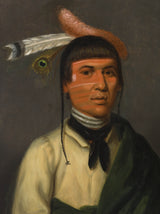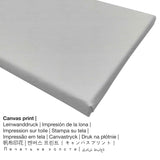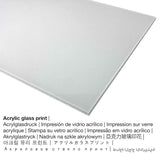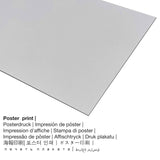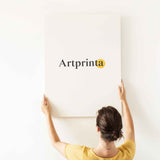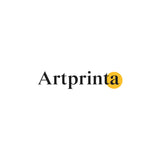Henry Inman, 1833 - No-Tin (Wind), onye isi Chippewa - mbipụta nka mara mma.
Ụtụ gụnyere. Mbupu gbakọrọ na ndenye ọpụpụ.
(© - Ụlọ ihe ngosi nka nke Los Angeles County - www.lacma.org)
Henry Inman’s portrait of No-Tin illuminates the integral place of American Indians in the nation’s history and art history. Painted after a lost original by Charles Bird King, Inman’s portrait of No-Tin is an early and defining example of American artists’ efforts, pre-photography, to depict Native Americans for national posterity. The portrait is also a testament to a critical moment in the history of Native Americans. Because Inman’s portrait survives, we know that No-Tin, which means Wind, was a Chippewa chief who came with his tribe’s delegation to Washington DC in the mid-1820s. Nothing is known of No-Tin’s own experiences during that visit, but he was one of scores of tribal leaders invited to the capitol by the U.S. government for negotiations, tours, and an audience with the President. The Chiefs would stay for several weeks, even months, for meetings and to experience Anglo American culture, all part of a federal diplomatic effort to pave the way for Indian removal and westward expansion. This mission was cultivated most influentially by Thomas L. McKenney, head of the Bureau of Indian Affairs, a division of the U.S. Department of War. McKenney had also made it his mission to collect and preserve Native American materials for a national collection. But it was the Indian delegations that inspired McKenney to add portraits to his collection and create a national Indian Gallery. In 1822, he commissioned King, a Washington DC portraitist, to capture their faces. The project was an attempt to produce visual documents that might represent and preserve the power he knew these Chiefs would soon lose. Read more
Nṅomi ọmarịcha nka nke gị
a 19th narị afọ ihe esere ihe nka nwoke Onye na-ese ihe America Henry Inman in 1833. E wezụga nke ahụ, ihe osise a gụnyere na Ụlọ ihe ngosi nka nke Los Angeles County art collection. The modern art masterpiece, which is in the ngalaba ọha is provided with courtesy of Los Angeles County Museum of Art (www.lacma.org).Also, the artwork has the creditline: . In addition to that, the alignment is portrait and has a side ratio of 3 : 4, which means that the length is 25% shorter than the width.
Nye iwu ngwaahịa ọkacha mmasị gị
The product dropdown menu ofers you the possibility to choose a material and a sizeaccording to your individual preferences. The following options are available for individualization:
- Aluminom dibond mbipụta (ọla): An Aluminium Dibond print is a print with an outstanding effect of depth. For our Direct Aluminium Dibond print, we print the favorite work of art on the aluminium surface. Colors are luminous in the highest definition, the details are crisp. The direct UV print on Aluminum Dibond is the most popular entry-level product and is an extremely stylish way to display artworks, because it draws focus on the whole artwork.
- Mbipụta akwụkwọ mmado (ihe kwaaji): A poster print is a printed cotton canvas with a slight finish on the surface. Please bear in mind, that depending on the absolute size of the canvas poster print we add a white margin of around 2-6cm round about the print motif, which facilitates the framing.
- Mbipụta iko acrylic na-egbuke egbuke: A glossy print on acrylic glass, which is sometimes named as a print on plexiglass, will turn the original work of art into brilliant wall decoration. With a glossy acrylic glass fine art print sharp contrasts and granular artwork details will be more recognizeable with the help of the fine tonal gradation of the print. Our acrylic glass protects your custom fine art print against sunlight and external influences for many decades.
- Mbipụta kwaaji: A canvas direct print is a printed cotton canvas mounted on a wood frame. Canvas prints are relatively low in weight, meaning that it is easy and straightforward to hang up the Canvas print without additional wall-mounts. A canvas print is suited for all types of walls.
Nchịkọta ihe nkiri
| Aha onye nka: | Henry Inman |
| Aha ndị ọzọ: | Inman Henry, Henry Inman, Inman Henry, Inman |
| Gender: | nwoke |
| Obodo onye nka: | American |
| Ọrụ: | onye na-ese ihe |
| Country: | United States |
| Nkewa onye nka: | omenkà nke oge a |
| Afọ ọnwụ: | 45 afọ |
| Afọ ọmụmụ: | 1801 |
| Afọ nwụrụ: | 1846 |
Tebụl a haziri ahazi nke ọrụ nka
| Aha nka nka: | "No-Tin (Wind), a Chippewa Chief" |
| Nhazi nka: | sere |
| Nhazi nka: | nkà nke oge a |
| Time: | 19th narị afọ |
| Afọ nka: | 1833 |
| Afọ nka: | karịa afọ 180 |
| Ụlọ ihe ngosi nka: | Ebe ngosi nka nke Los Angeles County |
| Ebe ngosi nka: | Los Angeles, California, Njikota Obodo Amerika |
| Dị n'okpuru: | Ebe ngosi nka nke Los Angeles County |
| Ụdị ikike nka: | ngalaba ọha |
| Site n'aka: | Ụlọ ihe ngosi nka nke Los Angeles County (www.lacma.org) |
Banyere edemede a
| Ụdị ngwaahịa: | ọrụ mgbidi |
| Mmeputakwa: | dijitalụ mmeputakwa |
| Production usoro: | Mbipụta UV ozugbo (mbipụta dijitalụ) |
| Mmalite ngwaahịa: | German mere |
| Stockdị ngwaahịa: | na mmepụta ihe |
| Eji ngwaahịa a chọrọ: | ihe ndozi mgbidi, nka mgbidi |
| Ndozi onyonyo a: | nhazi ihe osise |
| Ụdị anya: | 3:4- (ogologo: obosara) |
| Nkọwa: | ogologo bụ 25% mkpụmkpụ karịa obosara |
| Ngwa ngwaahịa dị: | akwụkwọ mmado (akwụkwọ kwaaji), mbipụta ọla (aluminium dibond), mbipụta kanvas, mbipụta iko acrylic (nwere ezigbo mkpuchi iko) |
| Canvas dị n'elu ihe nrịbama (mbipụta kanvas) nha dị iche iche: | 30x40cm - 12x16", 60x80cm - 24x31", 90x120cm - 35x47" |
| Mbipụta iko acrylic (nwere ezigbo mkpuchi iko) dị iche iche: | 30x40cm - 12x16", 60x80cm - 24x31", 90x120cm - 35x47" |
| Mbipụta akwụkwọ mmado (akwụkwọ kwaaji): | 30x40cm - 12x16", 60x80cm - 24x31", 90x120cm - 35x47" |
| Aluminium dibond ebipụta (ihe aluminium) dị iche iche: | 30x40cm - 12x16", 60x80cm - 24x31", 90x120cm - 35x47" |
| ụba: | agunyeghi |
Disclaimer: We try what we can to describe the art products as clearly as possible and to demonstrate them visually in our shop. Although, some tone of the printed materials and the imprint might diverge marginally from the presentation on your monitor. Depending on the screen settings and the condition of the surface, not all color pigments are printed 100% realistically. Bearing in mind that our art reproductions are printed and processed by hand, there may also be slight deviations in the motif's size and exact position.
Ederede a bụ ikike ọgụgụ isi ma chekwaa ya site na nwebisiinka ©, www.artprinta.com (Artprinta)

